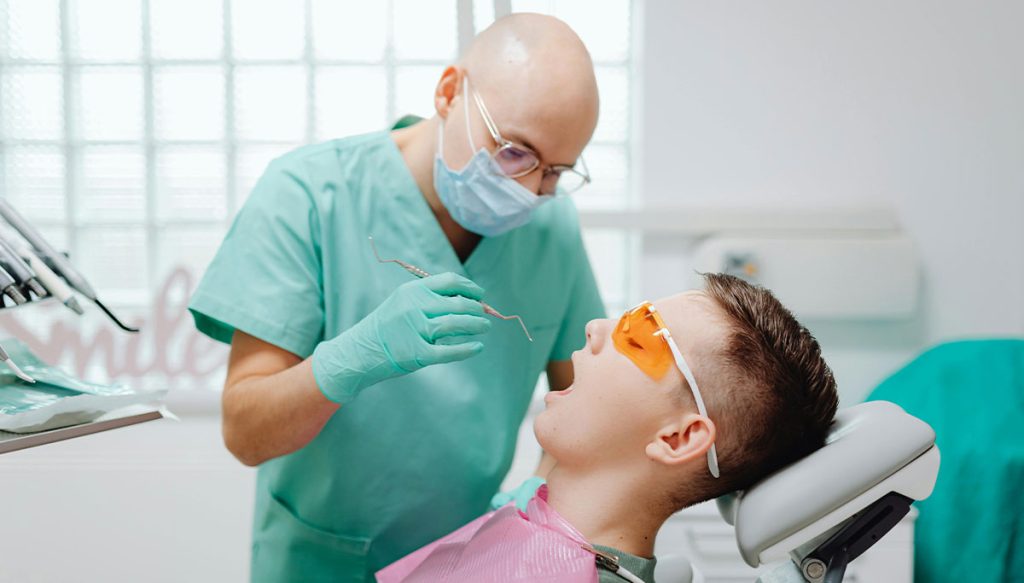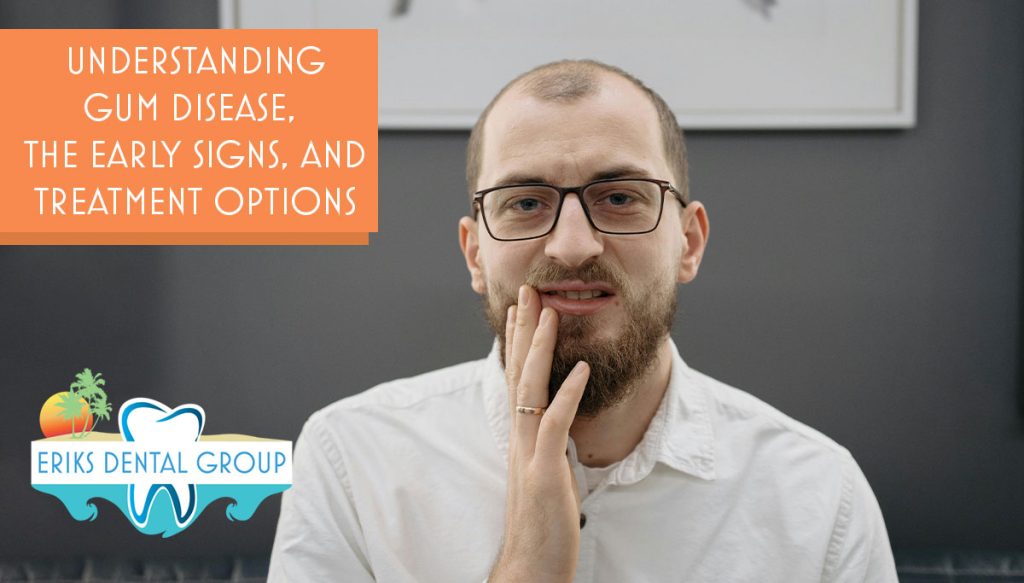Periodontal (gum) disease encompasses inflammation and infection of the tissues that support your teeth, including the gums and bone. This prevalent but serious issue can result in tooth loss and other health problems if not addressed. Gingivitis, a milder stage of gum disease, leads to red, swollen gums that may bleed. Fortunately, it can be prevented and treated through consistent oral hygiene and regular professional cleanings. However, if left untreated, gingivitis can advance to periodontitis, a more serious form of gum disease.
Risk Factors

Smoking is the most significant risk factor for gum disease, as treatments prescribed to smokers may be less effective. Hormonal changes make women and girls more susceptible as well. Certain medications for conditions like HIV and diabetes can also increase the risk of developing gum disease. Lastly, genetics can play a role, meaning some individuals may be more prone to it due to their hereditary background.
What Causes Gum Disease?
Gum disease begins with bacterial growth in your mouth, leading to inflammation of the gums. Plaque, a sticky film of bacteria, forms on your teeth and if not removed daily will eventually harden to form tartar which only a professional can remove. If plaque is not removed through regular brushing and flossing this can cause your gums to become red, swollen, and, prone to bleeding.
Untreated gum disease can spread causing loss of bone surrounding the gums which is un-treatable.
Early Signs of Gum Disease

Understand the early signs of gum disease so you can seek treatment before it progresses. Common symptoms to look out for are:
Bleeding Gums: Healthy gums shouldn’t bleed. If you notice blood when brushing or flossing, it could be an early sign of gum disease.
Discomfort: When chewing your food.
Tender or Swollen Gums: If your gums are tender, red, or swollen, it may indicate inflammation.
Receding Gums: If your gums are pulling away from your teeth, exposing more of the tooth or root, it is a sign of gum recession.
Stubborn Bad Breath: Bad breath that doesn’t go away even after brushing could also be a sign of gum disease.
Loose Teeth: As gum disease progresses, teeth may become loose or shift position.
If you are concerned you may have gum disease, you should visit your dentist. She can thoroughly examine your gums and measure any significant gum recess. She may order X-rays to check for bone loss.
Treatment Options for Gum Disease

The good news is that gum disease is treatable, especially when caught early. The primary aim of treatment is to manage the infection. Depending on the severity of the gum disease the number and types of treatments will differ. You may be referred to a periodontist specializing in treating gum disease.
Maintaining good daily oral hygiene at home is essential for any treatment. Your dentist may also recommend altering certain habits such as quitting smoking to enhance the effectiveness of your treatment.
Here are some common treatment options:
- Professional Cleaning: Regular dental cleanings can remove plaque and tartar buildup, helping to prevent gum disease from progressing.
- Root Planing and Scaling: This procedure removes plaque and tartar beneath the gum line. The roots of the teeth are smoothed which can make it difficult for bacteria to attach themselves back on the gums.
- Medications: Antimicrobial mouthwashes or oral antibiotics may be given to control bacterial infection.
- Surgical Treatments: In severe cases, surgical interventions such as ‘flap surgery ‘ or bone grafts may be necessary to repair damaged tissues and bone.
Healthy Mouth, Healthy Body
For about 40 years, the National Institute of Dental and Craniofacial Research (‘NIDCR’) has funded research on the links between oral health and overall health, known as the “oral-systemic connection.” Researchers have discovered numerous connections between oral diseases, like gum disease and tooth decay, and systemic conditions such as diabetes, dementia, heart disease, preterm birth, HIV, and cancer. These findings indicate that oral diseases may increase the risk of developing or worsening these systemic conditions, and vice versa.
For more information on gum disease and its treatment, you can visit the National Institute of Dental and Craniofacial Research.
Oral Care at Home – Routine is good

Here are some daily preventative measures you can take to keep your gums and teeth healthy:
- Teeth must be brushed twice every day with a fluoride toothpaste.
- Again, floss twice a day to remove plaque between your teeth. You can also use ‘interdental’ brushes; just make sure they are the right size. You may need a variety of sizes as the gaps between your teeth will not be the same. A pick/flosser is a good way to get the job done quickly.
- Visit your hygienist every six months for a professional clean. Your hygienist will usually pick up any other problems when performing the clean in which case she would advise you to make an appointment to visit the dentist.
- Stop smoking
Why Visit Eriks Dental Group?
Understanding gum disease, recognizing its early signs, and exploring treatment options are essential to maintaining good oral health.
If you’re experiencing any of the early signs of gum disease, it’s important to seek professional care. Eriks Dental Group is a great place to start. Their team of experienced dental professionals can provide comprehensive evaluations and personalized treatment plans to help you maintain healthy gums and teeth. For an appointment, call Eriks on 561-733-4004
Remember, looking after your gums is as important as caring for your teeth. Keep smiling and stay healthy

